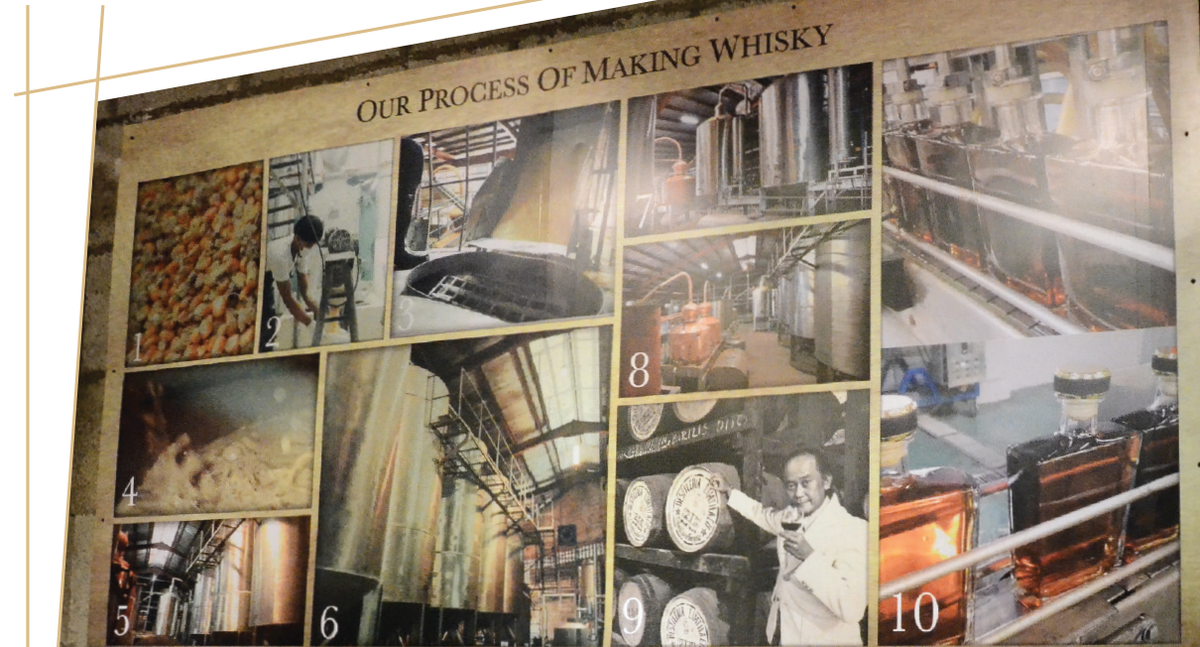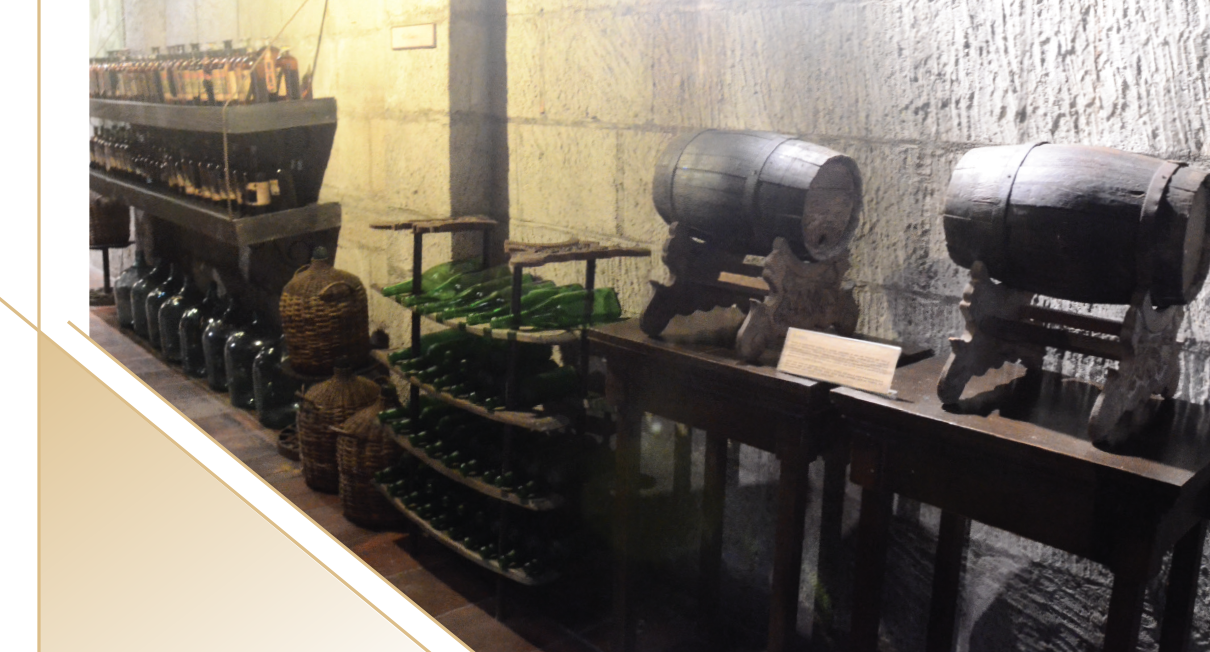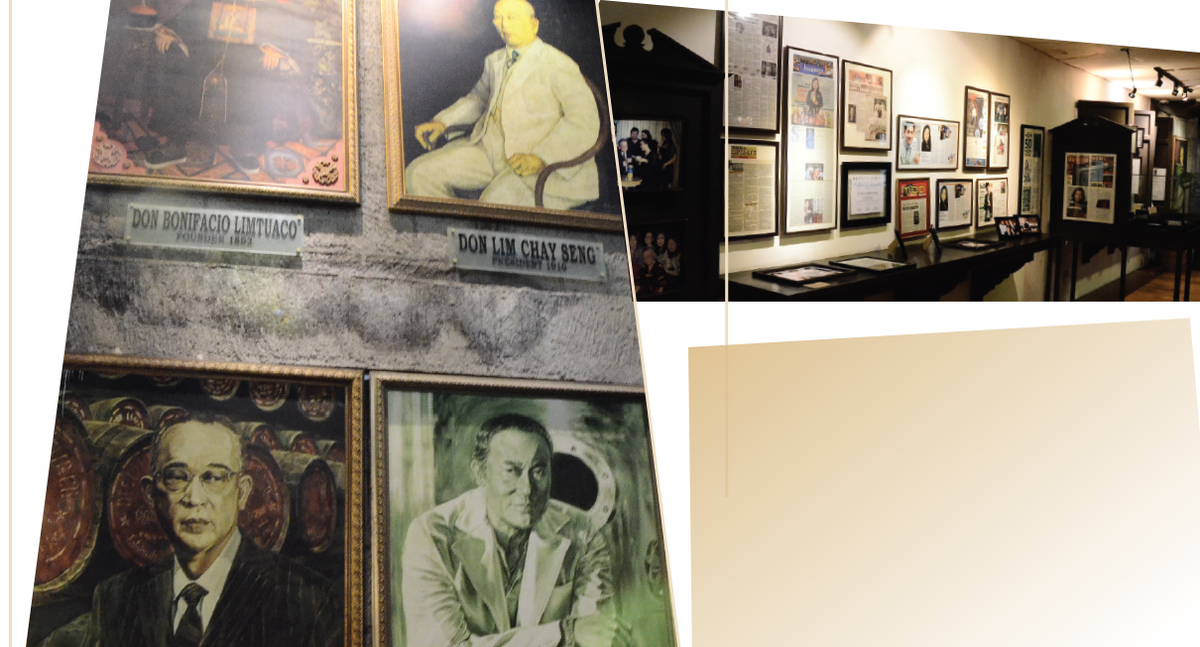Whether there’s reason to celebrate or mourn, a drink is always something that’s called for. Socializing here and around the world just isn’t the same without a little alcohol. We as a country take pride in having world-class beer and spirits, and there isn’t a place to better feel this than the Limtuaco Museum, inside the historic walls of Intramuros.


Housed in a bahay na bato, The Destileria Limtuaco museum chronicles over 100 years of its presence in the Philippines, and was once only open for family and friends of the Lim clan—the founders of the eponymous distillery. The two-storey house was acquired by one of its forefathers, Julius Limpe in the late 70’s with the intention of putting all the company artifacts and some of their family heirlooms in one place. It has just recently welcomed the general public, adding it in the list of worthwhile places to visit around the walled city.
A traditional sugarcane press called a dadapilan welcomes guests upon their entry. Back in the old days, this carabao-operated machine made of oak is widely used for extracting sugarcane juice—the primary raw material for production of distilled spirits. The museum’s heavy wooden doors reveal a walkthrough of the company’s humble beginnings, starting with the rustic display of the brand’s first product, the sioktong or iconic Chinese herbal wine brought to the country by Don Bonifacio Limtuaco, the founder of the company. According to the guide that accommodated us, he established his own liquor plant to share his family’s secret herbal tonic with the people.

Across the room, you can find a collection of old oak barrels and damajuanas or bottles used for storing up to 32 liters of alcohol and compounded products, as well as other ephemera from the Spanish colonial period. But what attracts to every tippler’s attention is their mini-distillery that shows the entire process of creating their signature rum and whisky from raw materials such as sugarcane and corn. At the far end of the first floor, you’ll see the emblem of the liquor brand along with semi-automatic equipment used for mass production of their offerings.

And when you think it’s everything that you have to see, wait until you set your foot on the museum’s stairway on your way up to the second level. A gallery of old advertisements for famous products like Napoleon V.S.O.P and the iconic White Castle Whisky are displayed on the walls and under the stairway. You can even access the digital archive of White Castle Whisky’s previous calendars to check the complete list of previous princesses of the whisky brand.

Taking each guest down memory lane, the second floor traces back the Limtuaco family tree and commemorates the distillery giant’s master blenders. Vintage items that were once owned by the third generation heir, James Limpe, to the recent successors Olivia Limpe-Aw and her family, are exhibited upstairs.
The other section turns the spotlight to the company’s pride, its Philippine crafted products. In little black notebooks are old labels of the alcoholic beverages of the company, all of which are in a pristine condition. The homegrown liquors they represent are made solely from Philippine agricultural products, and bring a little bit of joy and comfort to our lives. A museum tour costs PHP 100, while students and PWDs get to enjoy it for a discounted price of PHP 50. Should you want to try their spirits, there’s an old-fashioned bar filled with wooden stools on the ground floor that offers alcohol-tasting to guests for an additional fee of PHP 100. We were able to enjoy single shots of their best-sellers, starting off with Intramuros (cacao-flavored brandy), Paradise Mango Rum (sweet mango rum), Manille Liquer de Calamansi (calamansi-flavored vodka), and the three-year-old Very Old Captain or VOC (rum made from molasses).
Withstanding the test of time. Destileria Limtuaco Museum is not just a family legacy, but also an attraction that wonderfully showcases our love for a simple drink.
Schedule:
Tuesday to Sunday: 10 PM – 6 PM
Also published in GADGETS MAGAZINE December 2018-January 2019 Issue.
Words by Jewel Sta. Ana
